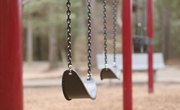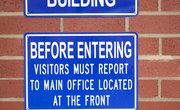School violence is a serious problem. Most schools have some level of violence problems, whether it is bullying, school fights or even students taking guns or knives to school. The presence of violence in a school leads to multiple serious consequences. It is important to recognize the consequences of the violence so that the school can address the problem before it spirals out of control.
Consequences to Children
It is easy to identify the consequences of violence to children. In addition to the physical consequences resulting from physical violence, there are also more social and psychological consequences as well. Children who are bullied or injured at school often show signs of depression, violent thoughts, suicide, anxiety, low self-esteem and other psychological issues, according to a 2005 study by the University of Turku in Finland. Children may avoid communicating with other students to avoid violent confrontations, which can be detrimental to social skills and human interaction.
Consequences to Schools
Violence in schools also has an impact on the school itself. The presence of a high amount of violence is bad for the school’s reputation, which means that parents will try to remove their children from the school. Fewer students means less funding for the school, which means the school will be unable to provide the best education. Extreme violence-prevention methods, such as constant security guards or police presence and metal detectors, are expensive and take away money for other uses.
Consequences to Education
According to a 2005 study by Davidson College, when children are in fear of violent attacks, they do not pay as much attention to teachers or lessons. Violently abused children may try to stay away from school as much as possible, according to the University of Turku study, which lowers the students’ grades and performance. If teachers must spend a portion of each day breaking up fights, this also lowers the amount of time that the teachers can actually educate children. Lower funding for a school also means that the school will have a reduced ability to provide a high-quality education for students.
Consequences for Zero Tolerance Policies
Many schools turn to a zero tolerance policy when school violence becomes a problem. They place metal detectors on school grounds and provide constant police monitoring. This can actually be a problem for the school in some cases. Students may be unwilling to “tell” on each other because they do not want friends expelled from the school. According to a 2001 article by Salon Magazine, most school violence also occurs outside of school grounds, which a zero tolerance violence policy cannot help with. The zero tolerance policy may also drive violence away from the school where the school cannot interfere. This can put students at additional risk.
Related Articles
References
Writer Bio
Brenda Priddy has more than 10 years of crafting and design experience, as well as more than six years of professional writing experience. Her work appears in online publications such as Donna Rae at Home, Five Minutes for Going Green and Daily Mayo. Priddy also writes for Archstone Business Solutions and holds an Associate of Arts in English from McLennan Community College.











